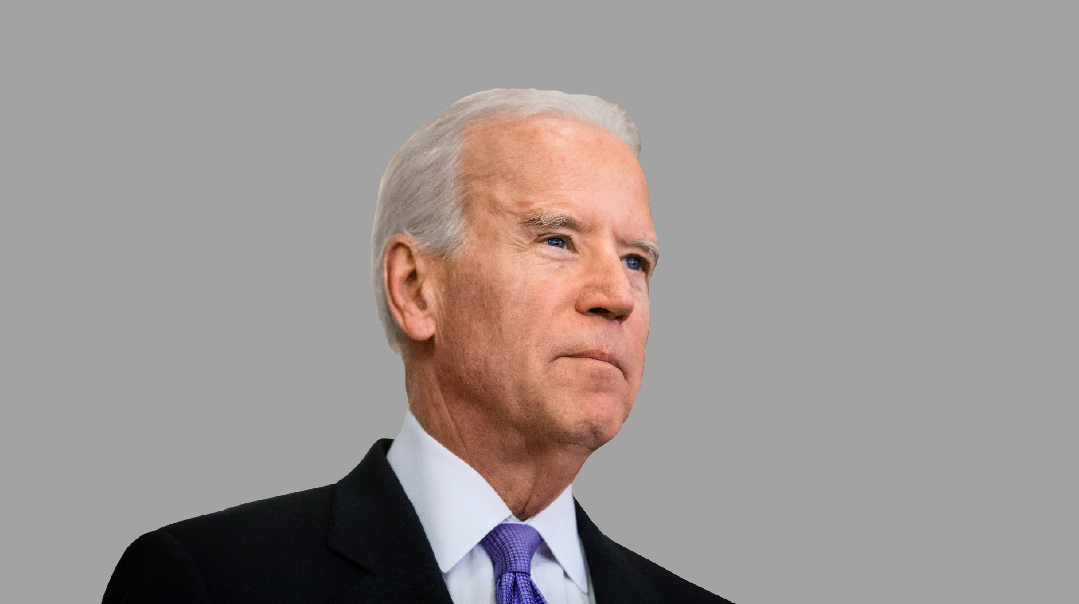Has Joe Biden’s Time Passed?

The Democratic field feels different this year — gone are the niceties of the past

J
oe Biden looked old and Kamala Harris looked bold.
That, in one sentence, is the takeaway from the first Democratic Party debate, a contest in which the senator for California put the former vice president, and the entire country, on notice that she is a serious contender for the presidency.
The Democratic field feels different this year — gone are the niceties of the past. The tone feels more aggressive and urgent, as if a great task must be accomplished. We are witnessing a generational shift, in which elder statesmen like Joe Biden are being overtaken by younger and more woke competitors.
Biden has been a public figure for 50 years. Throughout his long career he has made his share of mistakes, stumbled over his words, and voted many times in ways that he now regrets. Yes, it’s true that he was once collegial with segregationist lawmakers. But so was nearly everyone else.
Here’s the problem for the Democrats: While the base rallies around Harris and Buttigieg and Warren, all progressives in their own right, every poll shows Biden is the candidate most likely to defeat Donald Trump. But last week, Biden really did look like “Sleepy Joe,” President Trump’s favorite epithet for the Democratic front-runner. To win the nomination, Biden will have to figure out a way to deflect challenges from his younger opponents and keep his progressive base happy, while still appealing to the center. And if he fails?
This is a group of candidates who make Barack Obama look conservative. The dilemma will be how a candidate like Sen. Kamala Harris wins not only the progressive precincts of New York City and Berkeley, California, but also the small towns of Wisconsin and Pennsylvania. While candidates like Buttigieg and Warren can fire up the crowds on campus, those aren’t the swing votes a Democrat needs to win the election.
Has Joe Biden’s time passed? Perhaps. But that could bode poorly for the Democratic party.
Winners and Losers: China-US Trade Talks
P
resident Trump and President Xi of China agreed last week to take another whirl at the trade talks dance. The immediate effect: Trump will not impose a new round of tariffs on China. That’s excellent news for Beijing, of course, but it’s also a significant development for consumers in the United States who weren’t eager to see higher prices on consumer goods.
As part of the understanding, Trump agreed to ease some restrictions on US companies selling products to Chinese telecommunication giant Huawei. Lawmakers have accused China of using the maker of mobile phones and telecommunications networks to spy on individuals and countries. In response to Trump’s decision, Sen. Marco Rubio commented that Trump has made a “catastrophic mistake.”
“It will destroy the credibility of his administration’s warnings about the threat posed by the company,” Rubio said. “No one will ever again take them seriously.” Rubio, a 2016 rival who is now a sometimes ally of the president, also threatened to impose restrictions on the company through legislation. Trump, from his end, promised that the national security of the United States would not be compromised by the new sales.
Trump and Kim
Trump stunned the world when he convinced North Korean dictator Kim Jong-un to meet him at the Demilitarized Zone between the two Koreas and was the first sitting president to cross the line to the totalitarian north. It is a historic act and a significant development after months of radio silence between the two.
The surprise meeting was the third sit-down between the two leaders, but so far, there has been no breakthrough. The photo-op works well for Trump politically and likely raises Kim’s standing in the world, but the question remains: Is there any substance to the negotiations?
Beltway Briefings: What happened in Washington and why it matters
T
wo recent Supreme Court rulings will dramatically influence the result of the 2020 elections. One decision pleased the Democrats, while the other favored the Republicans. In both cases — what a surprise — the losing side is furious and claims a constitutional crisis. John Roberts, chief justice of the Supreme Court, cast the deciding vote in both cases.
What Happened?
In the first case, the Court decided not to intervene in two cases concerning gerrymandering, or the practice of electoral districts being drawn to favor one political party over another. The court essentially declined to involve itself in ruling on partisan gerrymandering. Every state is divided into electoral districts according to the size of its population, and each district sends a lawmaker to the United States House of Representatives. Every ten years there is a nationwide census, and the district boundaries are redrawn based on the population numbers.
Why It Matters
In 37 out of 50 states, legislators draw the electoral boundaries. Since Republicans control the state governments in most of them, the GOP has won the right to draw lines that favor its party. Of course, the sword is two-sided and cuts both ways.
What Happened?
In the second case, the Court rejected a move by the Department of Commerce to add a citizenship question to the 2020 census. Writing for the majority, Chief Justice Roberts questioned the administration’s motive in seeking the addition, but said that if Commerce Secretary Wilbur Ross could justify the question, it might pass muster with the court.
Why It Matters
Liberal activists claim that adding the question discriminates against minorities, especially Latinos, who are engaged in a prolonged citizenship process. When conducting a census, they say, one should take into account not only current citizens but also those likely to become citizens in the future. If these minorities are struck out of the census lists, their interests will not be represented in Congress.
On the other hand, Republicans are seeking to limit the influence of noncitizens, who have no legal right to vote. It is unclear at this point whether the issue can be resolved before the census must begin in October.
(Originally featured in Mishpacha, Issue 767)
Oops! We could not locate your form.













